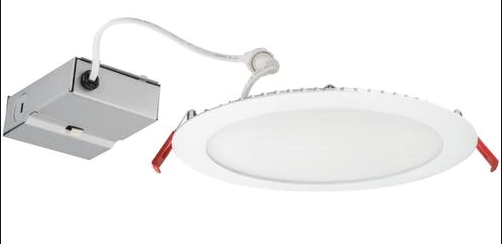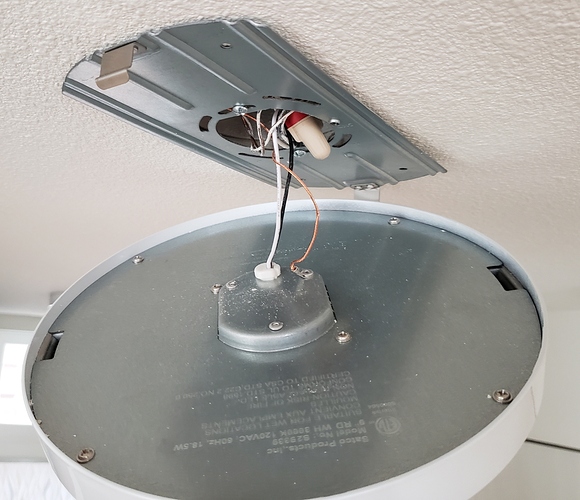You don't need to look for an eact match... That mount is just a bracket attached to a standard 4" utility box. If you replace the fixture, you will remove the existing bracket, and the replacement light will come with it's own bracket (if needed).
Before you go to the trouble of replacing all the fixtures, do some exploring... (with the breaker OFF)
- At the switch
Remove the switchplate and switch from the box... How it the switch wired to the lights? Is it a single cable (wire pair) into the box and a single cable (wire pair) out of the box? Are these multiple wires connected to the load side of the switch???
Just because the single switch controls all the couch/dining romm/kitchen lights does not mean that they are on the "same circuit". They may be different branches of the same circuit. It would not be the first time that a builder has put multiple branches onto the same switch to save costs.
If they are on separate branches, it is relatively easy and inexpensive to split the branches and install Zigbee switches... If the builder installed a single gang box, you will need to add a double gang rework box, but that can be a simply DIY job...
If they are on a single branch, then:
- At a fixture. The wiring could be run from the switch to one ceiling box to the next ceiling box to the next. At the ceiling box nearest to the switch, pull the wiring through the bracket to expose the wiring in the box... How is the fixture connected to the wiring in the box? Is there a single cable (wire pair) into the box and a single cable (wire pair) out of the box? Are there more than two cables entering the box? If there are more than two cables, then the circuit is being split, and it could be possible to split the branches and put in nano switches/dimmers to control the branches.
Does the cable entering the box have two or three insulated wires (not counting the bare ground wire)? If the cable has three insulated wires, it may be possible to rewire the fixture to convert a single circuit into a double circuit and reduce the number of nano dimmers/switches you need...
Once you have an idea of how it's wired, we can give you better recommendations...
Sadly, those fixtures, the Sylvania 72567, appear to be discontinued...
You could replace the fixtures with a similar (but not quite as stylish) Hampton bay model that is reasonably priced: HERE
OR, you could replace the fixtures with an inexpensive fixture such as: THIS
And use your choice of Zigbee/Z-Wave/WiFi smart bulb...





